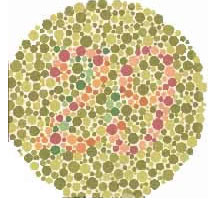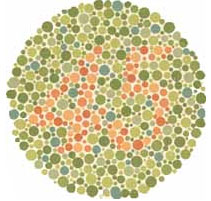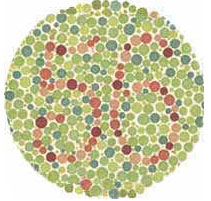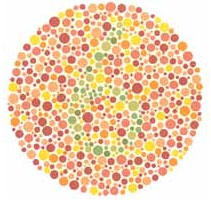Colour blindness is an inaccurate term for a lack of perceptual sensitivity to certain colours. Absolute colour blindness is almost unknown. There are three types of colour receptors in our eyes, red, green and blue. We also have black and white receptors. They are more sensitive than the colour receptors, that is why we have poor colour perception in the dark.
Colour blindness comes as a result of a lack of one or more of the types of colour receptors. Most colour perception defects are for red or green or both. About 10% of males have a colour perception defect, but this is rare in females. Red-green colour blindness is a result of a lack of red receptors.
Another form of colour blindness — yellow-blue is the second most common form, but it’s extremely rare. It is also possible to have the colour receptors missing entirely, which would result in black and white vision.
In case you have problem in reading the numbers in the chart for testing colour blindness, there are indications that you may be colour blind. You are free to call up NSPB’s ophthalmologists – Dr. Ekta Jain – 9868006394 & Dr.Rajesh Vaish- 09350202749 or contact any of our branches and fix up an appointment for an expert evaluation of your vision. An immediate diagnosis can help stem the root and timely corrective measures can be taken.






